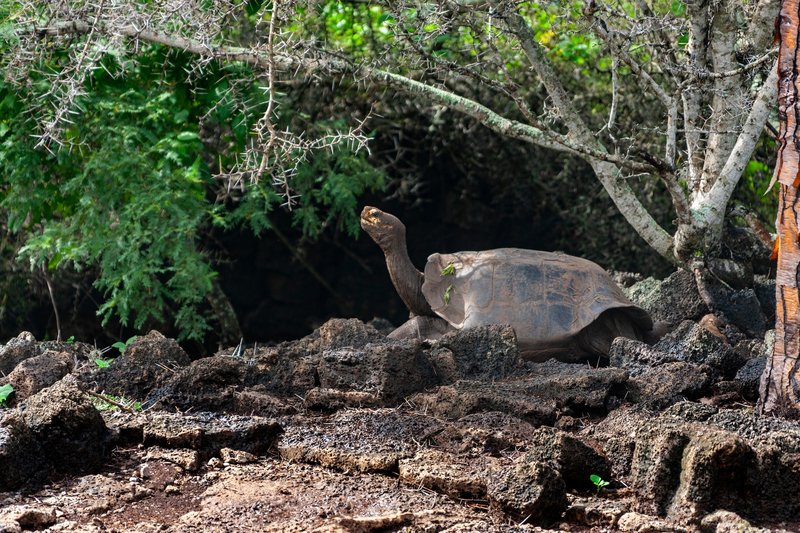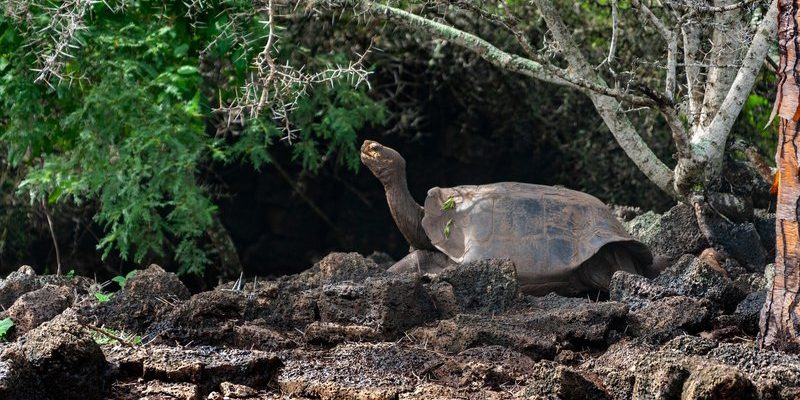
Now, if you’re new to the world of wildlife and ecosystems, you might wonder why the role of this tortoise matters so much. Well, just like how a book might have a pivotal character that drives the story forward, the Galápagos tortoise plays an essential part in maintaining the delicate balance of its natural habitat. In this article, we’ll explore the tortoise’s various roles, its interactions with other species, and why conserving this gentle giant is crucial for future generations.
Understanding the Galápagos Tortoise
The Galápagos tortoise is the largest living species of tortoise, and it can weigh over 500 pounds! These incredible reptiles have a lifespan that can exceed 100 years, making them some of the longest-living animals on Earth. They primarily inhabit the dry regions of the islands, where they feast on grasses, leaves, and cacti. Picture a tortoise basking under the sun, its large shell acting like a protective umbrella, allowing it to conserve water—a necessary trait for survival in arid conditions.
You might be wondering—how did the Galápagos tortoise get to the islands? It’s believed that they originated from a common ancestor on the mainland of South America and made their way to the islands on floating vegetation or logs. Over millions of years, these tortoises adapted to their unique environments, leading to the various subspecies we see today, each adapted to a different island’s conditions.
Ecological Role: Grazers and Seed Dispersers
One of the primary roles of the Galápagos tortoise in its habitat is that of a *grazer*. By feeding on vegetation, they help maintain the balance of plant life on the islands. Imagine them as nature’s lawnmowers, keeping the grass from overgrowing while promoting biodiversity. Their grazing behavior encourages new growth of plants, which is crucial for many other species in the ecosystem.
But that’s not all! These tortoises also play a critical role in *seed dispersal*. As they munch on fruits and plants, they inadvertently carry seeds in their digestive systems. When they travel from one spot to another, they deposit these seeds through their droppings, helping to propagate new vegetation. This process is essential for the health of the islands, ensuring that plant life continues to thrive and support various animal species.
Interactions with Other Species
The Galápagos tortoise doesn’t exist in isolation; it interacts with numerous other species. One notable relationship is with *birds* that scavenge on the tortoises’ remnants. When a tortoise finishes a meal, these birds help clean up the leftovers, ensuring nothing goes to waste. In turn, some plants have adapted to rely on tortoises for dispersal, creating a symbiotic relationship that benefits multiple organisms.
Additionally, these tortoises act as a natural water source for other animals. When they dig into the ground for food, they sometimes unearth underground water sources. This behavior can create small pools that other wildlife can access—making the tortoise a key player in sustaining life on the island.
The Impact of Human Activity
Unfortunately, human activity has significantly impacted the Galápagos tortoise population and its habitat. Over the years, invasive species like goats and rats have disrupted the delicate balance of the ecosystem. Goats, for example, compete with tortoises for food and have been known to damage the vegetation that tortoises rely on. Imagine trying to share your home with a noisy roommate who keeps eating your snacks—that’s how these tortoises feel!
Conservation efforts are crucial for protecting the Galápagos tortoise from extinction. Organizations are working to manage invasive species and educate locals and visitors about the importance of this gentle giant. By fostering understanding, we can help protect not only the tortoises but the entire ecosystem that relies on them.
Conservation Efforts in Action
A number of conservation initiatives focus on the Galápagos tortoise. For instance, breeding programs have been established to help increase their numbers. These programs often involve taking eggs from the wild and incubating them in controlled environments until they hatch. Once they’re big enough to fend for themselves, they’re returned to their natural habitats.
You might be curious about how these efforts are funded and supported. Local communities, tourists, and conservation organizations often come together to support these programs. Tourists visiting the islands contribute by paying entrance fees, which go directly towards conservation efforts. It’s like a big, caring family working together for a common cause.
The role of the Galápagos tortoise in its natural habitat is multifaceted and vital. As grazers, seed dispersers, and integral parts of the ecosystem, these tortoises symbolize the unique biodiversity found in the Galápagos Islands. Protecting them means safeguarding the delicate balance of life on these stunning islands.
So, the next time you picture a Galápagos tortoise, think of it not just as a slow-moving reptile but as an essential part of a broader story—a narrative of persistence, adaptation, and the beauty of nature. Each tortoise plays its part in an intricate web of life, and through conservation efforts, we can help ensure that this ancient creature continues to thrive for generations to come.

